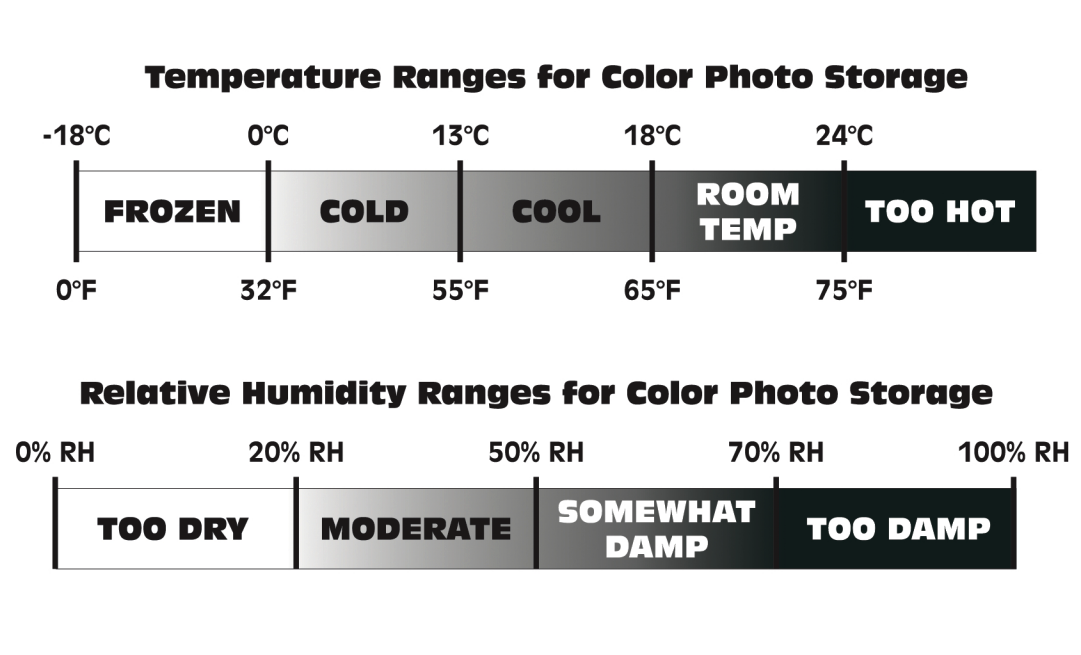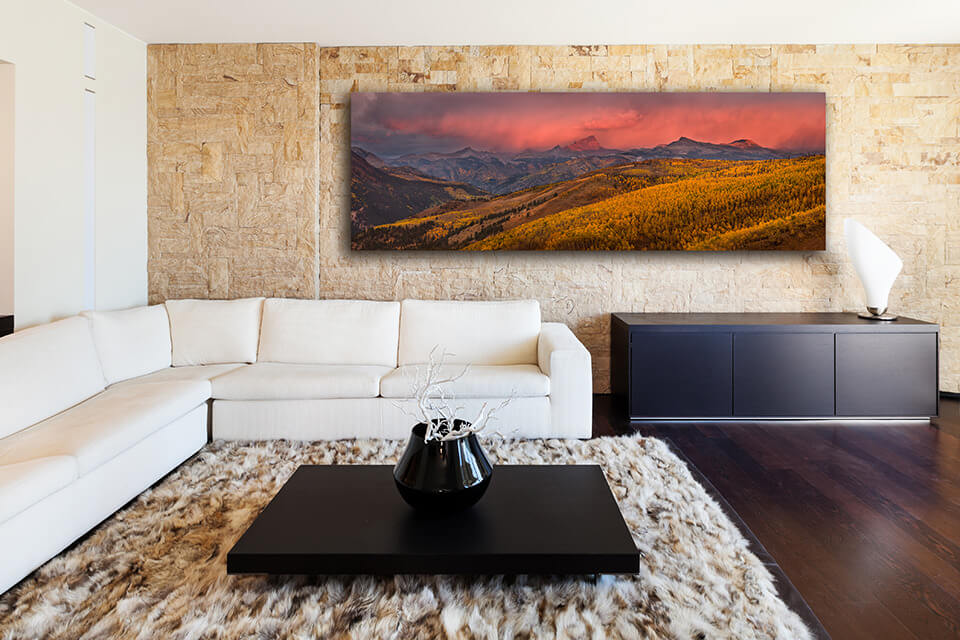
How to Hang Wall Art: The Complete Guide
HANGING PHOTOGRAPHY PRINTS, PICTURES, AND WALL ART How to hang photography prints, paintings, or any kind of wall art, like a professional? You are the
How do you take care of wall art? How do you protect your art prints from factors which shorten their lifespan? If you have invested in a priceless artwork and want to ensure it remains vibrant for a long time, this article is for you. Learn the best ways you can protect and properly care for your art so that you can enjoy it for years to come.
How do you take care of your artwork? Caring for wall art is a multi-faceted approach. This section examines the cautions and actions one can proactively take in order to extend the life of their artwork investment.
In order to properly care for wall art it is important to understand what factors can cause decay. According to the Image Permanence Institute (IPI) there are a number of forces which cause decay of photographs. Some of those are light, heat, pollution, moisture, and even the framing materials themselves. These forces can cause damage such as: yellowing, cracking, delamination, mold, and fading.
Exercise proper care for your wall art prints by handling them correctly.
You can care for your wall art by providing proper protection. An unframed art print is much more susceptible to damage by the causes listed above: light, heat, pollution, and humidity. Therefore, if you want to increase the lifespan of your prized art it is best to protect it through framing. NOTE: This is the case for wall art, which is made of paper prints. Metal and canvas prints do not have paper.
The two most common types of protection through framing are traditional glass framing and acrylic face mounting. In glass framing the print is sandwiched between a glass piece, mat board, and filler board and backing paper. In acrylic face mounting the print is sealed between acrylic layers and archival adhesive.
Both framing methods provide protection, especially if high quality materials are used. However, acrylic prints seal the paper print in a way that the glass framing cannot. For this reason it provides superior protection. An additional consideration is that an acrylic face mount print will not shatter if you drop it, whereas glass will.
Additionally, you may wish to look into appraising and insuring your prized art possessions.
Even if all the protection precautions have been taken, damage to art is almost certain if it falls off the wall. For this reason it is crucial that wall art is mounted properly on a wall to minimize the risk of damage from falling. This is especially important for larger and heavier prints. For more information, read: How to Hang Wall Art: The Complete Guide.Even if all the protection precautions have been taken, damage to art is almost certain if it falls off the wall. For this reason it is crucial that wall art is mounted properly on a wall to minimize the risk of damage from falling. This is especially important for larger and heavier prints. For more information, read: How to Hang Wall Art: The Complete Guide.
Extreme temperatures can cause damage to wall art. The fact is that photo prints are better off in slightly cooler temperatures than what most of us prefer for room temperature. For example 70-75F is not optimal for a photo. However, there aren’t too many options here for wall art that is on display in our homes. However, what can be done is to ensure that there are no other sources of heat near the artwork, such as heat producing lights, heat vents, fireplaces, etc.
The image below is a reference from the Image Permanence Institute:

Image source: Image Permanence Institute
Wall art is meant for display. That means that no matter what, it will get light exposure, which shortens its life. However, there are many things that can be done to extend that life and increase protection and care of the artwork.
Do you need UV protection for art? Yes absolutely. Never place a piece of artwork on a wall, which will get direct sunlight. This will be very damaging to the piece of art. Also, when framing any art, always opt for a UV protective layer, whenever possible.
Finally, use proper lighting when illuminating your artwork to minimize any damaging effects. For more information, read: Photography Art Illumination Complete Guide.
Care and protect your wall art prints by avoiding bad humidity levels. Humidity will play a bigger role on canvas prints and on unframed photographs, and less so on wall art such as metal or acrylic prints. The reason for this again is that acrylic face mounts are sealed and metal prints do not have any paper.
In general, recommendations for humidity levels for various types of wall art seem to range between 40% and 55%. However, the recommendation for color photographs is between 20% and 50%. Since the humidity level would largely depend on the local climate, it is outside of one’s control. Nevertheless, it is not recommended to hang wall art in bathrooms and areas where moisture can be generated.
Gintchin Fine Art | Limited Edition Print
Keeping wall art clean is another great way to care for it and increase its longevity. However, a proper approach must be used in order to avoid unintended damage.
Dust is one of the most common art cleaning activities you have to do. Any room interior will cause the artwork to accumulate dust over time. This can enable small debris and dirt to collect on the surface, which can damage your art over time. In addition, surface dust can increase the chance of scratching. Therefore, removing any collected dust often will keep your art investment clean.
Be sure to use a feather duster, a soft brush, or a lint-free cloth (such as cotton or microfiber). Do not rub but gently dust or wipe. Every now and then, take the art piece off the wall and clean the back side as well. Pay attention to its top facing aspects, as this is where dust is most likely to accumulate.
After you have removed the dust from your wall art, there may be the need to still do additional cleaning in certain spots. Again, lint-free cotton or microfiber cloths work best. But the important part is to use a gentle cloth made of non-abrasive materials. Otherwise you risk causing more damage to the photo art.
Additionally, the cloth has to always be clean and free of any debris, dirt, etc. to eliminate the possibility of scratching.
Even if you have never accidentally moistened your wall art, damp areas can still occur. This can happen in humid environments and/or climates. Moisture can be very damaging to art. Therefore be sure that you inspect from time to time to ensure that there are no damp areas in your artwork. Discoloration can be an indication of moisture.
When cleaning canvas prints art it is important to remember that the print itself is not protected by glass or acrylic. The only layer on top is a thin and clear protective coating. Therefore, you have to be very careful to not damage it.
Glass wall art is usually a paper print, which has been framed and protected with a glass layer in front. Therefore, when cleaning glass wall art, you will be cleaning the glass face surface.
Cleaning acrylic face mounted prints is similar to cleaning glass ones. Again, the paper print is protected by an acrylic layer. However, glass and acrylic are different in nature and the cleaning materials used will be different.
Metal (or aluminum) prints are the easiest to clean, because they are completely sealed and do not have any paper in them.
The methods described above are meant for general cleaning of wall art. Therefore, there are times when these methods will not work and you will need to seek the help of a professional art cleaner. Here are some examples:
Gintchin Fine Art | Limited Edition Print
The way you care when storing wall art will also affect its longevity. The following sections will guide you through the steps you need to take in order to assure good storage practices.
Before storing your wall art prints be sure to clean them to ensure that they will remain dust free and dirt free during the duration of their storage.
When storing your wall art prints you want to package them properly in order to protect them. Keep in mind that the packaging approach will vary depending on whether they are framed or not.
You don’t want to lean wall art on anything while in storage. Placing the artwork at an angle will cause uneven pressure on it and over time some bending may occur in its structure. Artwork with wood frames is more susceptible to this.
Therefore it is better to store the art horizontally flat, or in a straight vertical position where it has support on both sides to stay that way.
Again heat and moisture will apply here just as described above. Hot and humid conditions will not be a good environment to store your wall art prints.
The Image Permanence Institute (IPI) states: “Cool conditions are relatively user friendly and may provide more than sufficient life expectancy for recent color materials”.
The IPI further explains that photos should not be stored in environments where the Relative Humidity (RH) is higher than 70%, to prevent mold. “This is another reason why a rational RH range for color photo storage is from 20% to 50% RH”.

Image source: Image Permanence Institute
Concepts from this article have been referenced on Porch.com
Gintchin Fine Art offers a 30 minute no-obligation complimentary art consultation. Having designed and built gallery walls in home, office, corporate, and art gallery interiors I can help you make the right choice. If you need advice on choosing the right photograph, print size, print medium, frame option, hanging system, etc. I can help. Take advantage of my experience and skills, and request your no-pressure art consulting session today.


HANGING PHOTOGRAPHY PRINTS, PICTURES, AND WALL ART How to hang photography prints, paintings, or any kind of wall art, like a professional? You are the

HOW TO SELECT THE BEST WALL ART HANGING SYSTEM Knowing how to choose the best hanging system is important when you hang a photo print,

How do you choose the right frame for a landscape print? Mounting a high quality frame around a landscape print can create an impressive piece

The ability to visualize art prints on your wall before buying is a skill that can save you headaches. Whether you are an art curator,

Whether you are an interior designer or an art collector, you have decided to use fine art nature photography for interior design. Your goal is

How to Light Fine Art Photography Prints and Wall Art Knowing how to light artwork in your home or business can be the difference between
Gintchin Fine Art offers exclusive limited edition fine art photography by Lazar Gintchin, a nature and landscape photographer specializing in large format size prints. Each image in Gintchin’s portfolio is a unique and limited edition print. The gallery includes high-quality wall art prints in acrylic and metal mediums, providing a luxurious fine art presentation. With a diverse range of genres to choose from, art enthusiasts can curate a collection that reflects their aesthetic preferences.